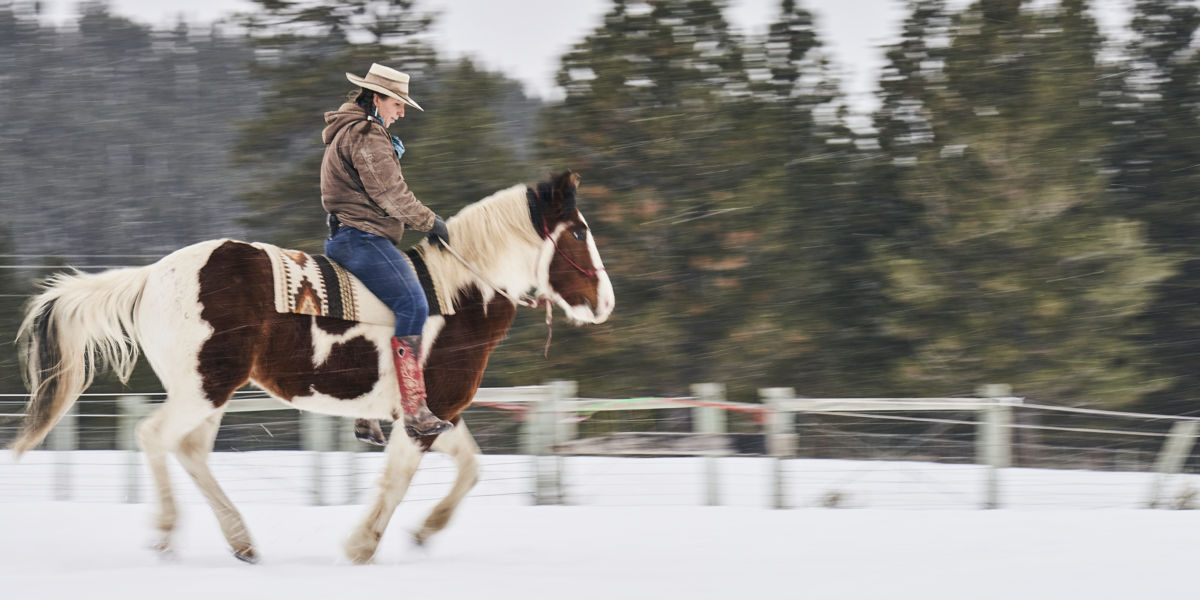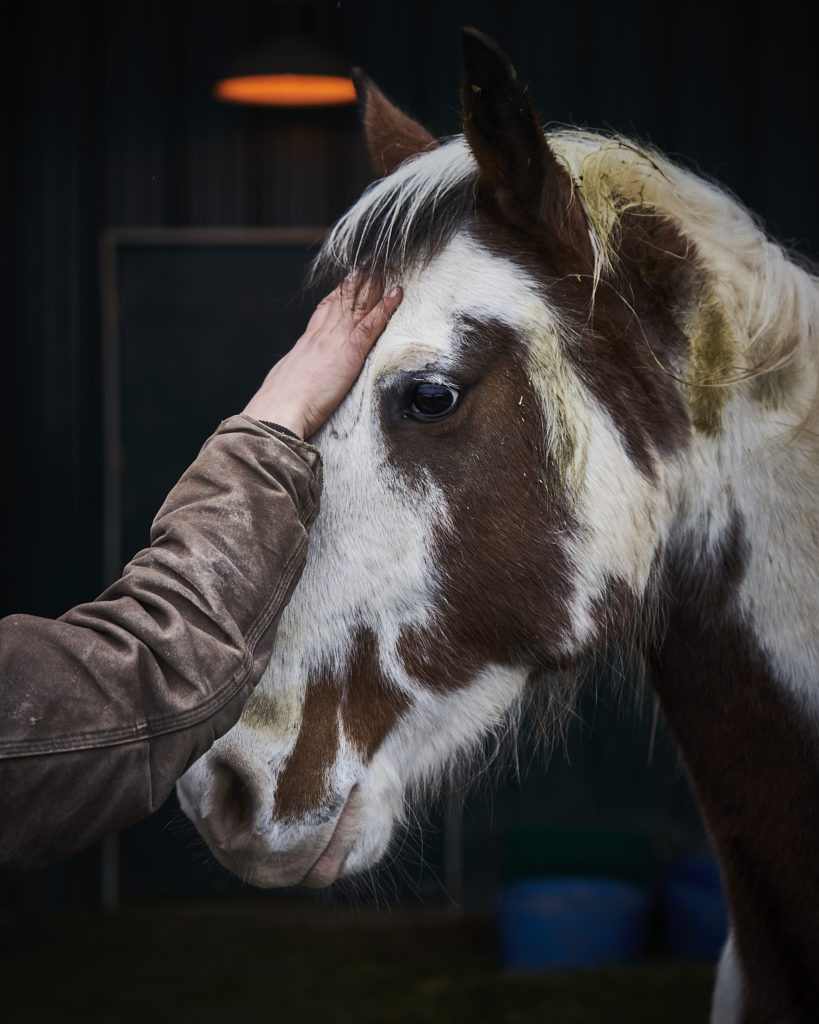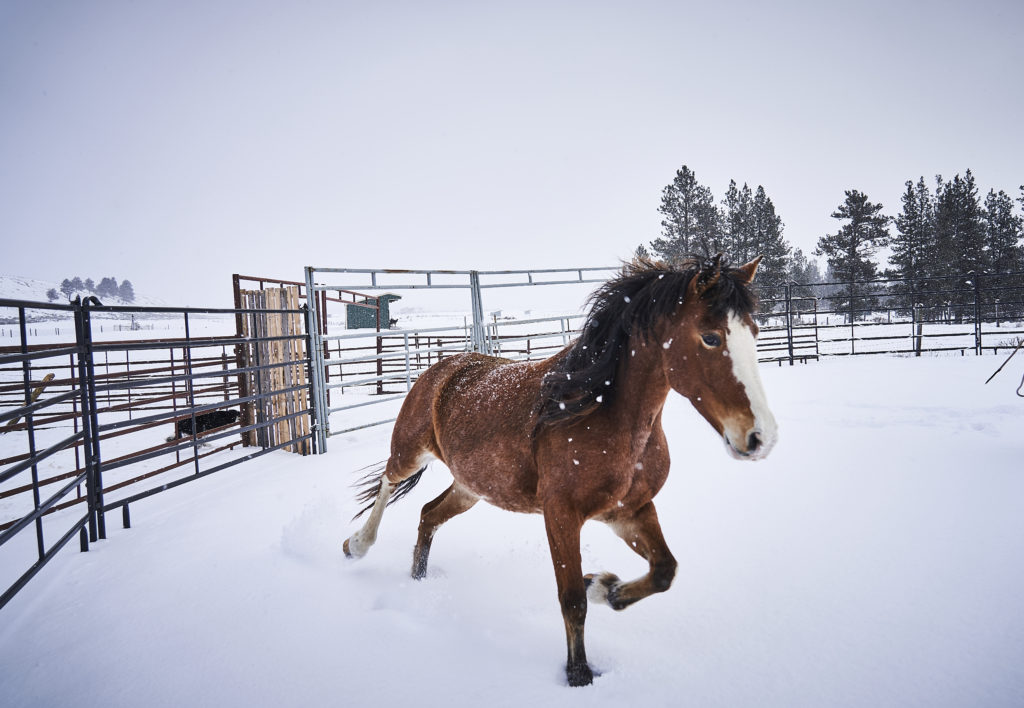
Once a “Total Valley Girl,” She’s Now Saving Wild Mustangs on a Montana Ranch
For Jackie Kecskes, training horses is all about building trust. “They have so much to teach us.”


“Fate” is a word you don’t often see on LinkedIn. But most career paths are influenced, in some way or another, by fortune, whim, or some combination thereof. For Jackie Kecskes, however, divine inspiration came in a most peculiar form: A beat-up, bootleg copy of the Nickelodeon television series Hey Dude.
This was 2007, and a torn ACL had landed the Division I college soccer player in the hospital for a stint. Named for its setting on a Tuscon, Arizona, dude ranch, Hey Dude aired on the network from the late 1980s to the early ’90s—and had been a favorite of hers, in passing anyway.
Now, fully immersed in the adventures of the teenage ranch hands while poring over one episode after another, Jackie punched through the nostalgia barrier to reach a sense of clarity, transcendence.
The self-described “total Valley Girl” whirled down a rabbit hole of ranch-related searches, bent on leaving California behind. And finally, there it was: A summer position on a ranch in Colorado.
“It just kind of took ahold of me,” Jackie says. So much so that after completing her degree from California State Northridge in the San Fernando Valley, she took a teaching job in a town conveniently located just outside the ranch, and then, when summer came around, launched her ranching career and never looked back.
“When I told my mom I wanted to be a teacher, you couldn’t get a word in between the two of us because of the yelling,” Jackie recalls of telling her conservative Hungarian parents. “They went without for so long, and now I’m choosing a profession that makes zero money.”
But life on the ranch offered different riches for Jackie, delivering a sense of camaraderie she had never before experienced. “We became like a family.”

Thomas J. Story
The Plight of the Mustang
Decades before Jackie would approach her professional fork in the road, President Richard Nixon signed into law a bill declaring wild, free-roaming horses and burros “fast disappearing from the American scene” to be “living symbols of the historic and pioneer spirit of the West; that contribute to the diversity of life forms within the Nation and enrich the lives of the American people.”
Say what you will of Nixon, but the 1971 Wild Free Roaming Horses and Burro Act marked the culmination of a lifetime of efforts by Velma Bronn Johnston, better known as Wild Horse Annie, to protect wild horses and ensure their humane treatment. Johnston had witnessed firsthand the brutal eradication of mustangs and other breeds, which were rounded up, hog tied, and slaughtered for chicken feed and fertilizer.
The picture today, when it comes to mustangs, in particular, is more complex than simple right and wrong. New policies, even those with good intentions, can have downstream effects few crusaders could have envisioned.
Protected under the act, the population of the mustang, which derives its name from the Spanish word mesteño, or “running wild,” began to spike to unprecedented numbers, worrying ecologists that overgrazing could damage much of the West’s already fragile ecosystems.
To alleviate the growing apprehension, the Bureau of Land Management crafted parameters for ecological sustainability known as appropriate management levels, a measure designed to preserve the equilibrium between all wildlife and their corresponding habitats.

Thomas J. Story
Under these guidelines, a cap sent wild horses exceeding appropriate management levels into holding pens, where, in a perfect world, they would enjoy a brief stay prior to adoption.
The only problem: Adoption rates have failed to come even remotely close to the soaring number of horses lingering in these short-term facilities, creating an interminable logjam that has hijacked funds allocated for long-term pasture care for ongoing maintenance purposes instead.
In turn, overcrowded short-term facilities can no longer afford to bring in additional wild horses to await adoptions that may never come. As a result, many of the animals live out their lives in these holding facilities while the population of horses on public lands continues to surge beyond what was once designated the appropriate management level.
“As of March 1, 2020, the wild horse and burro population on public lands was estimated to be about 95,000, which is more than triple the number of animals the land can sustainably support in balance with other public resource values, including wildlife, recreation, livestock grazing, energy resource development and others,” the Bureau of Land Management announced in August.
Excess mustang populations and scores of horses unable to live out natural lives on long-term pasture facilities means adoption is more critical than ever.
But adoption, as Jackie can attest, is only the first step toward a successful solution. Training a wild mustang can be, to no one’s surprise, an intimidating task. Sometimes, it takes the perspective of an outsider to inject a breath of fresh air.

Thomas J. Story
“Too Big a Personality”
Early into her Nickelodeon-inspired career, Jackie set a course: She wanted to become a ranch horse manager. But those working the male-dominated job weren’t as keen on welcoming her into the club. Men on the Colorado ranch frequently scoffed at Jackie’s aspirations, calling her “obtuse” or “too big a personality.”
“I had to hear, ‘We’re just looking for that classic male cowboy look,’ or, ‘We’re just not willing to figure out housing for a female,’ or ‘We’re just not convinced that the physical aspects of this job can be handled by a woman.’”
Adding to the gender impasse were Jackie’s alternative training philosophies, which ran counter to the conventional wisdom where she practiced.
“In the horse world, everybody knows everything,” she says. “And you can’t tell anybody anything.”
Jackie knew she needed to look elsewhere if she was going to see her dream come to fruition. That’s when she discovered the Resort at Paws Up, a dude ranch outside of Missoula, Montana, where the well-heeled go to put on the velvet cowboy gloves. Jackie’s teaching background and enthusiasm persuaded resort management to bring her aboard, but she was first tasked with redesigning the children’s program.
It was Jackie’s then-boyfriend, not her, who landed the job as the lead horse manager at Paws Up. But that relationship ran its course, she says, and when he left the ranch and created a job vacancy, Jackie raised her hand.
“I was very honest with them,” she says. “I told them I didn’t have the same level of experience, but I’d work my butt off. That was good enough for them. Four years later and here I am.”

Thomas J. Story
Jackie tried early into her tenure as horse manager to get mustangs to the property at Paws Up, but says her initial requests were answered with a hard “No.” Much like Jackie, the wild horses came with a perceived personality that was too big for life on a resort. But as has become a theme in her professional pursuits, persistence paid off.
Before long the property welcomed the arrival of its first set of mustangs, which Jackie quickly recognized as “a very different breed” that no one on the staff had any knowledge about. In many ways, the staff’s unfamiliarity leveled what was previously a lopsided playing field.
“At the other ranch I thought for a while that maybe I had to dumb myself down,” she says. “I lost myself for a little while there, thinking maybe I needed to talk a certain way, be a little more girly, or ask for help. Eventually I realized you have to just be who you are. Instead of trying to adapt to fit in, you have to find a place that’s willing to accept you for who you are.”
Natural Horsemanship
Paws Up not only accepted Jackie’s “big personality” but went the extra mile by embracing the unique training methods, often referred to as natural horsemanship, she brought to the table.
Among Jackie’s philosophical inspirations were the doctrines of Buck Brannaman, a renowned trainer who’s “probably the closest thing there is to what people would call a horse whisperer,” Jackie jokes, adding that “he’s also the first person who would punch you in the face for calling him that.”
Brannaman, who is the subject of the documentary Buck, is considered “one of the world’s leading practitioners of handling horses based on classical concepts from the California vaquero tradition,” according to his website. This approach emphasizes “working with the horse’s nature, using an understanding of how horses think and communicate to train the horse to accept humans and work confidently and responsively with them.”
The ultimate goal with this technique, according to Brannaman’s program, is to make “the animal feel safe and secure” and to ensure “the horse and rider can achieve a true union.” Much of the onus in Brannaman’s method is therefore placed on the human instead of the animal.
“If you don’t like the result that you’re getting, it’s not the horse’s fault. It’s your fault,” Jackie says. “You’re not communicating properly. Most people don’t want that level of accountability. When you tell someone there’s a better approach to something, it rubs them the wrong way.”

Thomas J. Story
As with the property’s recently adopted mustangs, which Jackie now describes as “happy and enthusiastic,” horses brought to Paws Up arrive with little to no training. From there, Jackie and her team of trainers begin what they prefer to call the horse’s “education.”
“First, there’s the old-school cowboy method of breaking them—which much of the Western world still uses—where they tie the horse’s neck tight around a post so it can’t move,” she says. “The entire time this horse is bucking and rearing to do whatever it can to save its life. Another cowboy will come up and grab or rope the hind leg and then back the horse up so it’s stretched as far out as it can go. Eventually it exhausts itself and accepts its fate. But we believe in educating our horses instead of beating them senseless.”
Jackie’s formula, which separates the crew at Paws Up from many of the country’s equestrian centers, comes from a place of empathy. Horses look at humans with the distrust of a predator due to the appearance of our forward-facing eyes, Jackie says, something the animal can detect even from a great distance.
Learning how to extinguish that skepticism is what creates a willing partner in the relationship, she says. The team at Paws Up accomplishes this by presenting the horse with options. If it reacts with a fight-or-flight response, the trainers simply allow it.
“But when that doesn’t get the horse its desired result, which is me leaving it alone, it’s going to start looking for other things,” Jackie says. “Being left alone by the predator is a reward for the horse. All of a sudden, trust is being built because you’re giving this animal the opportunity to make mistakes and you’re not punishing it. The key is always to be consistent, because inconsistency is the killer of trust.”
“They Teach Us So Much”
Despite the hard road she faced breaking into the world of horse training, the trailblazing ranch hand is now finding herself to be something of a role model to a mostly female staff at Paws Up.
“It’s just crazy to see where I am now,” she says, “to be around all of these empowered women who come because they want that sisterhood.”
The familial atmosphere at Paws Up has also extended to visitors, where Jackie uses equine therapy on teenagers and adults who have endured a traumatic experience.
Having entrusted their well-being to Jackie and her staff, the mustangs at Paws Up now give their human companions an intimate window to their own strengths and vulnerabilities.
Even Jackie, who has now been immersed in the Hey Dude lifestyle for nearly a third of her existence, says she, too, is perpetually learning from her mustangs.
“How to present yourself, how to live with empathy for one another, how to approach things in a way that encourages people to want to be a part of your team, and how to believe in yourself without being prideful,” she says. “They teach us so much.”
This Story Came From the 2020 Home & Hearth Issue
Get one year of Sunset—and all kinds of bonuses—for just $24.95. Subscribe now!
